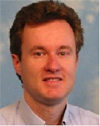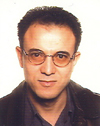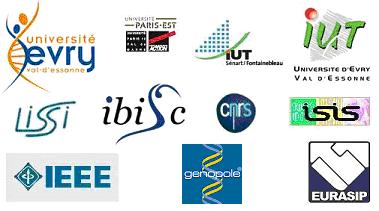Confirmed Plenary Speakers:
 Pr. Jenny Benois-Pineau From University of Bordeaux, France.
Pr. Jenny Benois-Pineau From University of Bordeaux, France.
Presentation (Slides): Soon
Homepage: http://www.labri.fr/projet/AIV/Analyseetindexationvideo/Accueil.html
Presentation Title: Indexing of compressed video : methods, challenges, applications.
Abstract: With the fastly developing standards for video compression, the availability of the video content at a large scale in the compressed form has become an everyday reality. Compressed video streams whatever is the compression standard contain primary information which without full decompression of the content can serve for its indexing and retrieval. This primary features optimized for the compression purposes are very often noisy and subject to compression artefacts. Hence their re-use for analysis and indexing purposes remains a challenge. In this paper we present the methodology which starting from the early low – resolution standards of MPEG family up to the new high-quality-high definition video compression approaches aims at answering the same question: how to re-use noisy primary features for fast and efficient video indexing.
Short Biography:
Jenny Benois-Pineau is a full professor of Computer science at the University Bordeaux 1 and chair of Video Analysis and Indexing research group in Image and Sound Department of LABRI UMR 58000 UniversitéBordeaux1/Bordeaux2/CNRS/IPB-Enseirb-Matmeca. She is also a deputy scientific director of theme B of French national research unity GDR CNRS ISIS. Her topics of interest include image and video analysis and indexing, motion analysis and content description for content-based multimedia retrieval. She is the author and co-author of more than 110 papers in international journals, conference proceedings, book chapters. She has tutored an co-tutored 18 PhD students and 19 research masters. She is associated editor of EURASIP Signal Processing:Image Communication, Elsevier and Multimedia Tools and applications, Springer journals. She has served on numerous program committees in international conferences and workshops: ACM MM, CIVR, CBMI, AMR, IPTA, SAMT, ECMCS… She has served as expert for European Commission since FP4 and is a member of Technical Advisory group for Media programme EACEA DG Culture, CE. She is a member of Multimedia Commission of French Ministry of National Education and member of scientific board of International Center for Mathematical Modelling at the University of Växjo, Sweden. She has been coordinator or leading researcher in international research projects Platon, Balaton, IP XMedia, French representative in COST292 European action, national research projects ANR and numerous projects with French industrial companies. She gave invited lectures at the universities of Sussex (GB), UPC (Spain), UNAM (Mexico), University of North Carolina at Chapel Hill (USA), Brooklynn Polytechnic (USA), Firenze (Italy)…
 Pr. Moncef Gabbouj From University of Technology, Tempere, Finland.
Pr. Moncef Gabbouj From University of Technology, Tempere, Finland.
Presentation (Slides): Soon
Homepage: http://www.cs.tut.fi/~moncef/
Presentation Title: Multidimensional Particle Swarm Optimization and Applications in Data Clustering and Image Retrieval.
Abstract: Particle swarm optimization (PSO) was introduced by Kennedy and Eberhart in 1995 as a population based stochastic search and optimization process. The natural behavior of a bird flock when searching for food is simulated through the movements of the individuals (particles or living organisms) in the flock. The goal is to converge to the global optimum of some multi-dimensional function. PSO is conceptually related to other evolutionary algorithms such as Genetic Algorithms, Genetic Programming, Evolution Strategies, and Evolutionary Programming. In this talk, we present two novel techniques, which extend the basic PSO algorithm. The first algorithm called multi-dimensional PSO (M-D PSO) deals with problems in which the dimension of the solution space is not known apriori (recall that PSO and most evolutionary algorithms assume a fixed dimension). M-D PSO includes two interleaved PSO iteration processes, a positional PSO (equivalent to the basic PSO operation) followed by a dimensional PSO in which the dimension of a particle is allowed to vary. In a multidimensional search space where the optimum dimension is unknown, swarm particles can seek both positional and dimensional optima. Since the backbone of MD PSO is the basic PSO, it is still susceptible to premature convergence, especially at high dimensions. To address this problem, we propose a second extension of the basic PSO algorithm, called Fractional Global Best Formation (FGBF) technique. Instead of being guided by the best particle in the swarm (the member of the swarm that achieves the best value of the objective so far) a new particle is created whose j’th component is the best corresponding component of all particles in the whole swarm (i.e. a component-wise best particle). The new particle is essentially a better guide to the swarm than PSO’s native global best, since it makes use of the larger diversity existing between the components of the swarm particles.
A major application of MD-PSO is in automatic design of Artificial Neural Networks (ANNs) by evolving the network to the optimal configuration(s) within an architecture space. The optimum dimension converged at the end of a MD PSO process corresponds to a unique ANN configuration where the network parameters (connections, weights and biases) can then be resolved from the positional optimum reached on that dimension. The architecture space is defined over feed-forward, fully-connected ANNs so as to use the conventional techniques such as back-propagation and some other evolutionary methods in this field.
In order to validate the proposed algorithms, the techniques are applied several well-known domains, including nonlinear function minimization, data clustering, image retrieval and biomonitoring. An extensive set of experiments shows that MD PSO equipped with FGBF produces far better results than competing methods in the literature.
Short Biography: Dr. MONCEF GABBOUJ received his BS degree in electrical engineering in 1985 from Oklahoma State University, Stillwater, and his MS and PhD degrees in electrical engineering from Purdue University, West Lafayette, Indiana, in 1986 and 1989, respectively.
Dr. Gabbouj is currently a Professor at the Department of Signal Processing at Tampere University of Technology, Tampere, Finland. He was Head of the Department during 2002-2007. Dr. Gabbouj was on sabbatical leave at the American University of Sharjah, UAE in 2007-2008. Dr. Gabbouj was Senior Research Fellow of the Academy of Finland during 2007-2008 and 1997-1998. Dr. Gabbouj is the co-founder and past CEO of SuviSoft Oy Ltd. From 1995 to 1998 he was a Professor with the Department of Information Technology of Pori School of Technology and Economics. From 1994 to 1995 he was an Associate Professor with the Signal Processing Laboratory of Tampere University of Technology, Tampere, Finland. From 1990 to 1993 he was a senior research scientist with the Research Institute for Information Technology, Tampere, Finland. His research interests include multimedia content-based analysis, indexing and retrieval; nonlinear signal and image processing and analysis; and video processing, coding and communications.
 Pr. Frédéric Dufaux From Swiss Federal Institute of Technology (EPFL), Lausanne, Switzerland.
Pr. Frédéric Dufaux From Swiss Federal Institute of Technology (EPFL), Lausanne, Switzerland.
Presentation (Slides): ipta_2010_dvc_dufaux.pdf
Homepage: http://people.epfl.ch/frederic.dufaux
Presentation Title: DISTRIBUTED VIDEO CODING: STATUS, CHALLENGES AND OUTLOOK.
Abstract: Fast and efficient access to information, including multimedia information, is paramount in nowadays information society. Tremendous advances in computer and communication technologies have led to the ubiquitous use of digital media content and the successful deployment of new products and services. However, digital video is still demanding in terms of processing power, bandwidth and storage capacity. This digital revolution has only been possible thanks to the rapid and remarkable progresses in video coding technologies. In addition, standardization efforts in MPEG and ITU-T have played a key role in this endeavor. Most past research activities on video coding has relied on the two principles of predictive and transform coding. All present MPEG and ITU-T video coding standards are based on motion compensated block-based Discrete Cosine Transform (DCT) hybrid design. The state-of-the-art H.264/Advanced Video Coding (AVC) standard is the latest installment in this series. Distributed Source Coding (DSC) is a new coding paradigm which has appeared a few years ago. It based on the Slepian-Wolf and Wyner-Ziv Information Theory theorems from the 70’s. The Slepian-Wolf theorem considers the lossless coding of two or more correlated sources and characterizes lower bounds on the achievable rates. More specifically, it proves that when performing distributed coding (i.e. separate encoding and joint decoding), the same optimal rates can be achieved as when performing conventional coding (i.e. joint encoding and decoding), with a residual error probability which converges towards 0 for long sequences. The Wyner-Ziv theorem extends this result for lossy coding with Side Information (SI), under the assumptions that the sources are jointly Gaussian and a Mean Square Error (MSE) distortion measure is used. The principle of distributed coding can also be applied to video coding. More specifically, Distributed Video Coding (DVC) relies on a statistical framework, unlike the deterministic approach of conventional MPEG and ITU-T coding schemes. Thanks to its properties, DVC offers a number of potential advantages and functionalities: flexible complexity allocation between the encoder and decoder, strong resilience in the presence of transmission errors, codec independent scalability, and multi-view coding where cameras do not need to communicate. Per consequent, DVC has gained a lot of interest over the last few years and has been the subject of numerous publications. DVC is especially appealing for a new class of up-link applications such as low-power sensor networks, wireless video surveillance cameras and mobile communication devices. While most of the initial interest in distributed coding principles has been towards video coding, it is now straightforward that other applications, such as media authentication, secure biometrics and tampering detection, may also benefit from these ideas. In this presentation, we offer a survey of recent trends and perspectives in DVC. More specifically, we discuss recent contributions addressing some open research issues such as coding efficiency, complexity, error resilience, scalability, multi-view coding, and applications beyond coding. We then identify challenges and hurdles ahead which need to be successfully tackled in order to bring DVC closer to market adoption and commercial exploitation. Finally, we assess the most promising avenues and outlook for future research directions in order to reach the breakthrough in video compression needed for the next generation of video products and services.
Short Biography:
Frédéric Dufaux received his M.Sc. in physics and Ph.D. in electrical engineering from the Swiss Federal Institute of Technology (EPFL), Lausanne, Switzerland, in 1990 and 1994 respectively. Frédéric has over 20 years of experience in research. In 1992, he was a visiting researcher at AT&T Bell Laboratories. In 1994 and 1995, he was a Postdoctoral Fellow at the Massachusetts Institute of Technology. From 1995 till 2001, he was a senior member of research staff at Digital Equipment Corp. / Compaq Computer Corp. In 2001, he joined Genimedia SA as a principal solutions architect. Since 2003, he is a scientific senior research staff at EPFL. From 2003 to 2009, he was also chief scientist of Emitall Surveillance SA. Frédéric has been involved in the standardization of digital video and imaging technologies for more than 15 years, actively participating in MPEG and JPEG committees. He is currently co-chairman of JPEG2000 over wireless (JPWL) and JPSearch. He is the recipient of two ISO awards. His research interests include image and video coding, distributed video coding, compressed sensing, subjective visual quality assessment, objective quality metrics, video surveillance, privacy protection, multimedia security, video transmission over wireless network, and multimedia content search and retrieval. Frédéric is the author or co-author of more than 90 research publications and holds 10 patents in the field of media technologies.
 Pr. Malik Mallem From University of Evry Val d'Essonne, Evry, France.
Pr. Malik Mallem From University of Evry Val d'Essonne, Evry, France.
Presentation (Slides): ar-mallemspeechipta-2010.pdf Homepage: http://www.ibisc.univ-evry.fr/Members/ficheInfoMembre?id=Mallem
Presentation Title: Augmented Reality: Issues, Trends and Challenges.
Abstract: Like Virtual Reality (VR), Augmented Reality (AR) is becoming an emerging platform for many applications like, edutainment, audio-visual aids, museums, medical, industry… This keynote surveys the current state-of-the-art in Augmented Reality. It describes work performed in our research team and explains the issues and problems encountered when building Augmented Reality Systems. It summarizes the tradeoffs and approaches taken so far to overcome these problems and speculates on future directions. The survey reviews some technologies, approaches and techniques that have been encountered in sensors representation, robust estimation for registration and tracking. Head-worn and hand-held devices and corresponding techniques are reviewed. A stress is made on numerous approaches, for marker or markerless tracking, developed by the Augmented Reality community, beginning with those that are based on point or planar fiducial marks and going on to those that avoid the need to engineer the environment by using natural features. A precise, fast, and robust registration between synthetic augmentations and the real environment is one of the most important tasks for augmented reality. For example, to achieve this for a moving user requires the system to continuously track the user’s position within the environment. Thus the tracking and registration problem is one of the most fundamental challenges in AR research today. Especially tracking within outdoors environments is still difficult to achieve even with today’s technology, such as a Global Positioning System (GPS) in combination with relative measuring devices like gyroscopes and accelerometers.
Short Biography: Malik Mallem received his research master, in computer science, from Paris VI University and his PhD degree in robotics and computer science from Paris XII University, in 1985 and 1990 respectively. His research deals with Augmented Reality(AR) and Collaborative Work(CW) applied to robotics and telerobotics at IBISC- Complex System Laboratory – Evry, France. In AR, his research interests include sensors modelling and calibration, marker and marker less hybrid and robust 3D tracking, In CW, his research interests include 3D collaborative interaction and groupware software architecture. Since 1999, he is a Professor at Evry University and the head of IBISC’ARCW research team which is implied in several French and European research projects.
